Pink Purslane / All Year Round / Edible
A common non-native plant. It has a earthy almost beetroot like flavour and can be eaten raw or cooked.
Common Names
Winter Purslane, Siberian Spring Beauty
Botanical Name
Claytonia sibirica
Scientific Classification
Kingdom – Plantae
Order – Caryophyllales
Family – Montiaceae
Physical Characteristics for Pink Purslane
Leaves
The plant has a mixture of flower and basal leaves. The flower leaves are deep green, round and grow in opposite pairs, they have no real stem. The basal leaves are almost spoon shaped, veined again deep green, round and glossy. Both leaves are around 5-10cm in diameter.
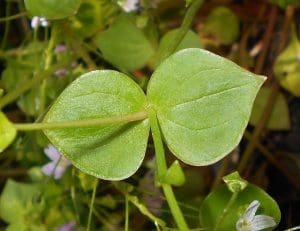
Flowers
The flowers are pale pink to white in colour with pink to purple stripes running along their length. They have 5 petals and each petal has a deep split at the top.
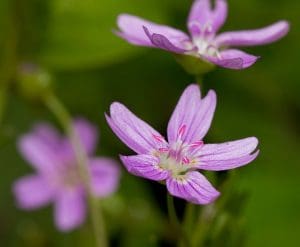
Habitat
Most often it’s found in woodlands on damp ground.
Known Hazards
None known
Could be Confused with
It could be confused with Chickweed (Stellaria media) but this is also edible.
Red Campion (Silene dioica) can also look similar but this doesn’t have rounded leaves, tastes of soap but is non-toxic.
Edible Uses
The leaves have a lovely flavour and are very succulent, when young can be added to salads, when they get older and tougher they can be cooked as a leafy green. They are probably at their best in winter and spring when there’s not much else about.
Notes on Herbal Uses
The plant is a mild diuretic and has been used as a poultice for cuts and sores, its juice can be used as a treatment for sore eyes, and dandruff.
It’s a rich source of potassium, magnesium and calcium as well as Omega oils that are typically found in fish. In fact it’s been shown to be the richest vegetable source of alpha-linolenic acid, an essential omega-3 fatty acid.
Extra notes from the Foragers
It was a common vegetable of the Roman Empire. The origin of Purslane is not certain, but the existence of this plant is reported about 4,000 years ago. It was introduced to the UK in the 1800’s.
Resources
https://www.naturespot.org.uk/species/pink-purslane
https://wildflowerfinder.org.uk/Flowers/P/Purslane(Pink)/Purslane(Pink).htm



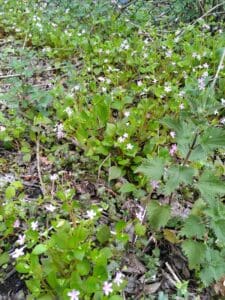
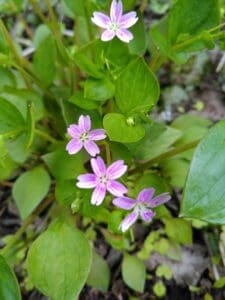
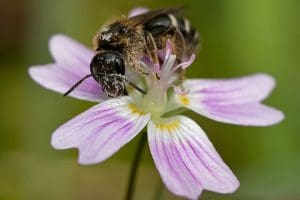
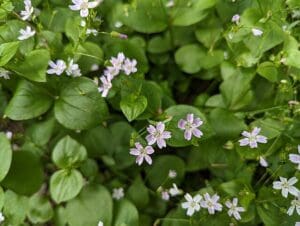



Leave a Reply
You must be logged in to post a comment.